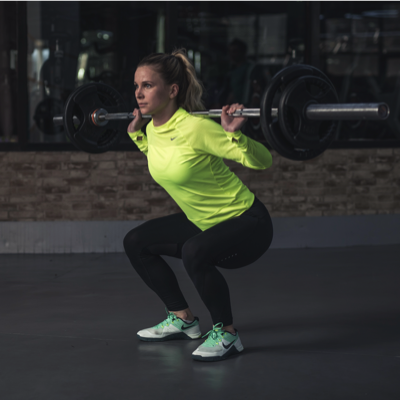While riding your bike is undoubtedly the most essential part of your training as a cyclist, incorporating strength and conditioning exercises offers several additional and specific benefits that cannot be achieved through time spent on the bike alone. So in no particular order, here are my top 5 strength and conditioning exercises for cyclists:
- Squats: Squats are a fundamental lower body exercise that targets the quadriceps, hamstrings, glutes, and core muscles. So in terms of a targeted and specific exercise you can’t get a lot better! They help develop lower body strength, which is obviously crucial for generating power at the pedal. As a useful secondary effect, squats also promote stability and balance, reducing the risk of injuries. And because of the number of different variations of a squat, you have enough options depending on your current ability and to stop you getting bored!
- Deadlifts: Deadlifts are a compound exercise that primarily targets the glutes, hamstrings, and lower back muscles. So again a very specific exercise that targets the right muscles for a cyclist, albeit missing the core which is often overlooked by cyclists. Another point to mention here is injury risk; compared to a basic bodyweight squat, any form of deadlift is more technical and executed badly can much more easily cause injury. So be careful! Deadlifts work for cyclists, because they strengthen the posterior chain, which is essential for generating power during pedal strokes and maintaining proper posture on the bike.
- Lunges: Lunges are unilateral exercises that target the quadriceps, hamstrings, glutes, and calves. They help correct muscle imbalances and enhance stability, which is crucial for maintaining a steady and balanced pedal stroke. Lunges also engage the core muscles, promoting better posture and reducing the risk of lower back pain. The main reason that lunges made it onto my list was because of stability and balance. Whilst balance on the bike is different, what lunges give you is that core strength that promotes general stability. When would that help? Any time you transition position, meaning you can tidy up the transition and lose less power and speed.
- Planks: Building on my rational for Lunges, if you really want to max out the corse strength then frequent planks are an excellent exercise for developing core strength and stability. A strong core will not only help you generate more power (by providing a stronger platform for your lower body to wrk against), but aa stronger core will help you hold an aero position for MUCH longer without fatigue setting in. Planks also help maintain proper body alignment, reducing strain on the lower back which are often problems that arise from a poor bike fit or less than well aligned form.
- Single-Leg Peddling: Whilst you might not consider this to be strength & conditioning, it is actually the perfect example of an S&C exercise! Single-leg peddling targets the hip flexors, glutes, hamstrings, and calves. It helps correct muscle imbalances and improves pedaling efficiency by ensuring smooth and even power distribution throughout the pedal stroke. I love single-leg drills, not only because they promote strength for watts, but they also improve form and technique (obviously when done well!).
By incorporating these exercises into a cycling specific strength & conditioning routine, you will improve overall muscular strength, power, stability, and endurance. S&C must always be sport specific, considerate of the demands of your event whilst miming the biomechanics for your chosen even that will most readily translate into power. You could of course go out and do repeated over-geared hill reps. On the other hand my suggestions above will also build strength but at a substantially lower risk of injury!




